Brentano String Quartet at the Kreeger Museum
Monday May 21, 2007
_________________________________________________________________
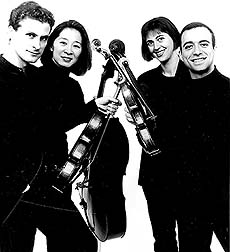 The Washington Post 5/21/07: The Brentano String Quartet clearly has an affinity for Beethoven. Not only does the group take its name from Antonie Brentano (thought to be the composer's mysterious "Immortal Beloved"), it's also made a name for itself with penetrating, widely praised performances of the late quartets. But the Brentano is equally committed to the works of contemporary composers, and at the Kreeger Museum on Saturday night, the ensemble brought the two together in a program that echoed dramatically across the centuries.
The Washington Post 5/21/07: The Brentano String Quartet clearly has an affinity for Beethoven. Not only does the group take its name from Antonie Brentano (thought to be the composer's mysterious "Immortal Beloved"), it's also made a name for itself with penetrating, widely praised performances of the late quartets. But the Brentano is equally committed to the works of contemporary composers, and at the Kreeger Museum on Saturday night, the ensemble brought the two together in a program that echoed dramatically across the centuries.
Beethoven's last string quartets are monumental works, regarded by many musicians as the ne plus ultra of the form. Deeply inspired by the A Minor Quartet, Op. 132, the Argentine composer Mario Davidovsky used its slow movement as a starting point for his own String Quartet No. 5, from 1988. It's a dramatic, highly compressed work that seethes with tension, seesawing between angular explosions and radiant serenity. And though the connections with Beethoven seemed elusively subtle, it proved to be a fascinating work, and the musicians gave it a robust and deeply involved performance.
Even so, the Davidovsky (and the Mozart Quartet in B-flat, K. 589, which opened the program) paled beside Beethoven's own magnificent String Quartet in E-flat, Op. 127. It's perhaps the most lyrical of the late quartets, but it's a dark, searching lyricism with confounding depths. The Brentano turned in an intense and beautifully calibrated reading that balanced the work's slow-melting beauties and its sharp wit; a memorable performance of one of the great works in the repertoire.
Angelique Kidjo at Lisner
Saturday May 19, 2007
_________________________________________________________________________
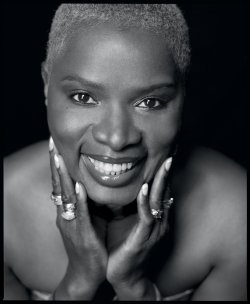 The Washington Post 5/19/07: Okay, okay -- so the latest album of Beninese Afro-pop sensation Angelique Kidjo has just been released by Starbucks, of all people, and will be marketed alongside Orange Crème Frappuccinos, Caramel Macchiatos and other froth for the summer. Does it matter? Kidjo has always been a crowd-pleaser, and "Djin Djin," with its infectious dance rhythms, catchy melodies and high-profile guest artists (Alicia Keys and Peter Gabriel, to name two) is, for the most part, a stunning new recording.
The Washington Post 5/19/07: Okay, okay -- so the latest album of Beninese Afro-pop sensation Angelique Kidjo has just been released by Starbucks, of all people, and will be marketed alongside Orange Crème Frappuccinos, Caramel Macchiatos and other froth for the summer. Does it matter? Kidjo has always been a crowd-pleaser, and "Djin Djin," with its infectious dance rhythms, catchy melodies and high-profile guest artists (Alicia Keys and Peter Gabriel, to name two) is, for the most part, a stunning new recording.
But Kidjo's full-bodied music really needs to be heard live, as she proved Thursday night at Lisner Auditorium. She's a born performer, and few singers have a voice like this -- rich as a double espresso and strong enough to topple small buildings. And backed up by a superb five- piece band, Kidjo roared, growled and purred her way through most of the songs off the new album, turning in a set that had the packed house dancing in the aisles.
Swiveling across the stage on pneumatic hips and delivering snippets of her generic "We are all one" philosophy, Kidjo had the audience in her hand from the get-go, alternating powerhouses such as "Mama Golo Papa" with sultry ballads such as "Salala." It was an eclectic mix -- Kidjo's music draws on influences from Brazilian samba to Cameroonian makossa -- but she made it all work, and even the few duds (a prettified "Gimme Shelter" and the top-40 "Iwoya") couldn't derail the rising intensity. And when Kidjo invited the audience up on stage to dance to the finale, "Tombo," the atmosphere was electric -- almost as if we really were all one, after all.
Pamela Z at the Tivoli
Tuesday May 15, 2007
__________________________________________________________________

Photo: Lori EanesThe Washington Post 5/17/07: Squalling babies, screeching birds, Puccini arias and the bland recorded voice of an answering machine -- it's all raw material for the relentlessly inventive singer and sound artist Pamela Z, who appeared at GALA Theatre-Tivoli over the weekend for three performances of "Voci," her electroacoustic meditation on the human voice.
For Z, the natural voice is just a starting point; it's the extended possibilities of singing that intrigue her, and for nearly two hours on Sunday she turned her classically trained soprano into a kind of cybernetic chorus.
Dressed all in black, hooked up to a Mac Powerbook and strapped into microphones, sensors and other electronics, Z prowled the stage like some postmodern ninja chanteuse, using her meta-voice to create vast sonic soundscapes and explore the human voice in all its incarnations -- from the first cries of an infant to the terrifying voices people hear in their heads.
And despite a few problems (there's no dramatic structure to keep things moving, and it sometimes felt as if Z were determined to use every vocal effect in the book), "Voci" was genuinely engrossing and often extremely funny.
Z is clearly willing to leap boldly into the unknown, and she's filled "Voci" with sonic wonders -- singing into amplified sheets of metal, for example, or bringing off Catalani's famous aria "Ebben? Ne andro lontana" while a computer-generated voice clumsily reads the lyrics.
Few other sopranos could even imagine it; Z turned it all into poetry.
Choral Arts Society at the Kennedy Center
Tuesday May 8, 2007
_________________________________________________________________________
 The Washington Post 5/8/07: Concerts by the Choral Arts Society of Washington are one of life’s few truly reliable pleasures: Artistic Director Norman Scribner has sophisticated, imaginative taste, and the ensemble sounds more precise and integrated with every performance. That was the case, anyway, on Sunday afternoon at the Kennedy Center, where the chorus turned in deeply satisfying accounts of Mozart, Gershwin and the American composer Morten Lauridsen.
The Washington Post 5/8/07: Concerts by the Choral Arts Society of Washington are one of life’s few truly reliable pleasures: Artistic Director Norman Scribner has sophisticated, imaginative taste, and the ensemble sounds more precise and integrated with every performance. That was the case, anyway, on Sunday afternoon at the Kennedy Center, where the chorus turned in deeply satisfying accounts of Mozart, Gershwin and the American composer Morten Lauridsen.
Mozart’s Mass in C Major, K.337 (Missa Solemnis) is often overlooked; it’s rather brief for a Mass, and lacks the renown of his famous Coronation Mass. But it’s a beautiful work with no lack of surprising turns and moving depths, and Scribner led the group’s Chamber Choir in an intense, very focused reading, with soprano Theresa Severin soaring through one achingly beautiful solo after another.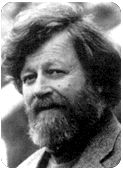
Morten LauridsenThe concert version of George Gershwin’s “Porgy and Bess” (which headlined the concert) links a dozen of the opera’s biggest crowd-pleasers, and Joseph Holt conducted a lively, uninhibited performance. Things got off to a slow start with a rather timid “Summertime”, but soprano Janice Chandler Eteme and baritone Alvy Powell quickly loosened up and turned in some gorgeous singing, while Holt spurred orchestra and chorus cheerfully into the rafters.
But it was Morten Lauridsen’s “Lux Aeterna” that really stole the show. Built on liturgical texts that all have to do with light, this 1997 work is absolutely radiant -- even exalting -- with a kind of rapturous joy running through it. Scribner led a lyrical, delicately nuanced performance that was not only stunningly beautiful, but had the rare and unmistakable ring of truth in every note.
Slanty Eyed Mama at the Freer
Monday May 7, 2007
_______________________________________________________________ 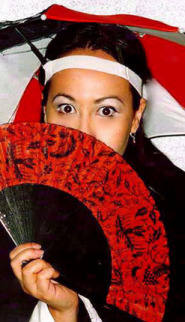
Slanty Eyed Mama's Kate Rigg(from The Washington Post 5/7/07)
The smart, edgy trip-hop duo Slanty Eyed Mama hit town on Saturday night, showing up in -- of all places -- the Freer Gallery's buttoned-down Meyer Auditorium, where you're usually more likely to hear a string quartet or traditional Afghan rubab music.
But it was an inspired choice. The X-rated Slantys (who describe themselves as "two good Asian girls gone bad-assed") dig fearlessly into the identity issues facing Amerasians, smashing stereotypes and spotlighting the subtle and not-so-subtle prejudices they face. As part of its celebration of Asian Pacific Heritage Month, the Freer could not have picked a more relevant performance.
Vocalist Kate Rigg, backed up by the superb electric violinist Lyris Hung, brought her machine-gun delivery and perfect comic timing to pieces that all revolved around the basic question she's always being asked: "So -- what are you?"
And the answer is never simple. Whether looking at the fantasies of Western men toward Asian women ("Me Love You Long Time"), the distorted self-image of adolescent girls ("I'm a Naughty Schoolgirl") or the prejudices of one minority toward another ("My Boyfriend's Black and There's Gonna Be Trouble"), Rigg used stereotypes against themselves to nuanced but devastating effect.
The songs were powerful, but some of the most telling moments came when Rigg read stories she'd collected from Amerasians, such as the poignant story of the Filipina in Massachusetts who insisted she was Puerto Rican so that she'd have a community to belong to -- even after a trip to Manila in search of her own elusive identity.
And yet more Josefowicz ....
Saturday May 5, 2007
______________________________________________________
There's a lot of Leila Josefowicz going around these days; she played Hindemith in January at the Kennedy Center, John Adams' "Dharma at Big Sur" this week in Baltimore, and is returning with pianist John Novacek for a recital next week at the Jewish Community Center of Greater Washington.
Looks tasty -- the program includes the Johannes Brahms Scherzo in C minor (“Sonatensatz”), Sergei Prokofiev’s Sonata in F minor Op. 80, Igor Stravinsky’s Duo Concertante, "Conversio" by the young Estonian composer Erkki-Sven Tüür and Franz Schubert’s Rondo Brilliant in B minor, D. 895. Two performances: Saturday, May 12 at 9:00 pm and Sunday, May 13 at 7:30 pm in the JCC's 290-seat Kreeger Auditorium. Tix run $34 to $47 -- call the JCC Box Office at 301-348-3872 for more info.
The Washington Post's Tim Page wasn't too crazy about Thursday's performance of "Dharma" -- he says it's for "those who don't want to explore new music deeply, but rather want to go just far enough to say they've been there." But The Baltimore Sun's Tim Smith called it "mind-bending", and said Josefowic " delivered the solo part with exceptional technical aplomb and nuance."
Leila Josefowicz: The Dharma of The Violin
By Stephen Brookes • The Washington Post • May 3, 2007
___________________________________________________________________________________
It's probably lucky for the world that Leila Josefowicz isn't tall. The brilliant young violinist once spent a year as a top model for Chanel, acting as the face of Allure perfume. But her short stint in the fashion world ended almost as soon as it began. "I'm not tall enough to be a model," says Josefowicz, who tops out at a modest 5 feet 5. "I'm tiny! No one's interested in me!"
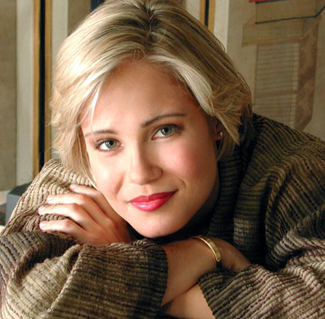 Well -- that may be a bit of an over-statement. At 29, Josefowicz has emerged as one of the more thought-provoking and distinctive violinists in the world, winning accolades for her radiant tone, consummate technique and fierce sense of adventure. She brought a rarely heard concerto by Paul Hindemith to the Kennedy Center in January, and this week she'll be playing John Adams's "The Dharma at Big Sur" with the Baltimore Symphony Orchestra -- a work so radical she had to have a six-string electric violin called the "Violectra" built to play it.
Well -- that may be a bit of an over-statement. At 29, Josefowicz has emerged as one of the more thought-provoking and distinctive violinists in the world, winning accolades for her radiant tone, consummate technique and fierce sense of adventure. She brought a rarely heard concerto by Paul Hindemith to the Kennedy Center in January, and this week she'll be playing John Adams's "The Dharma at Big Sur" with the Baltimore Symphony Orchestra -- a work so radical she had to have a six-string electric violin called the "Violectra" built to play it.
"It's an incredible piece -- it just overtakes you," she says of the half-hour concerto. "It's so daring, and it just builds and builds and builds to an incredible, emotional climax. By the end, you think the hall's going to explode."
The explosiveness, though, is just as likely to come from Josefowicz herself. A driven, Toronto-born prodigy, she began playing the violin at the age of 3, made her Carnegie Hall debut at 16, then graduated from the prestigious Curtis Institute of Music in Philadelphia and recorded the violin concertos of Tchaikovsky and Sibelius while still in her teens.
But even as her career took off, Josefowicz faced an unusual hurdle: her own good looks. By the mid-1990s, the classical field had become swamped with attractive young female musicians -- Vanessa-Mae, Lara St. John and Ofra Harnoy, to name just a few -- and industry marketers were encouraging them to perform in miniskirts, pout for the camera and generally play the sex kitten. Many did; St. John even posed topless, with a discreetly positioned violin, for her debut CD, while violinist Linda Brava bared all for Playboy.
Despite the trend -- Josefowicz was mentioned in a Time magazine article titled "Seductive Strings: Concerto for Cleavage and Orchestra" -- she stayed buttoned up.
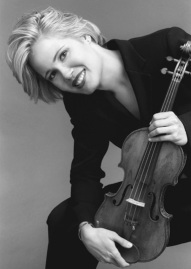 "Part of it is plain old self-respect," the artist says, in a backstage interview during her earlier visit to Washington. "I've worked so hard for so many years, why distract people with something that has nothing to do with my skill? It doesn't mean you have to be dowdy -- it just means don't throw a twist like that into the mix!"
"Part of it is plain old self-respect," the artist says, in a backstage interview during her earlier visit to Washington. "I've worked so hard for so many years, why distract people with something that has nothing to do with my skill? It doesn't mean you have to be dowdy -- it just means don't throw a twist like that into the mix!"
But when, at 20, Chanel came knocking, she couldn't resist -- and soon found her face staring from magazines over ad copy like: "No more top, middle and bass notes. Allure dispenses with these traditional notions to embrace a multifaceted approach."
Now the whole episode just makes her laugh.
"It's wrong to be selling what sex you are, instead of your art. But Chanel was classy -- it's okay to be classy!" And she insists she didn't make much of a sex symbol anyway: "When I walked on for the Chanel shoot, I was six months pregnant! I was, like, 'Hey, you guys want a twig? Well -- here ya go!' " (She was married at the time to the Estonian-born conductor Kristjan Järvi.)
The violinist's brief foray into modeling may just reflect a restless curiosity. She's friends with writer Anne Rice -- who once dedicated a novel to her -- and her conversation sails effortlessly from rock-and-roll ("Led Zeppelin has a kind of realness that's missing from today's bands") to architecture ("I think Santiago Calatrava is a genius") to fashion design ("Yohji Yamamoto completely changes how you think of the human body").
But her real commitment remains with contemporary classical music. She memorizes everything she performs (including the orchestral parts), so that she's "never worrying about things that shouldn't be mattering," and has become a friend and collaborator with some of the world's top composers, including John Harbison, Oliver Knussen, Steve Mackey and John Adams himself.
"When you meet him, you realize how out of the ordinary he is," she says of Adams, who, at 60, may be the most acclaimed composer in America. "He's had the greatest training as a composer, but he's really an extremely free spirit. And in 'Dharma,' that free spirit just takes over."
Commissioned for the 2003 opening of the Walt Disney Concert Hall in Los Angeles, "The Dharma at Big Sur" took its initial inspiration from Adams's own sense of awe when -- as an Easterner -- he first encountered the Pacific Coast. But the composer soon became intrigued with the playing of electric violinist Tracy Silverman, which reminded him, he later wrote, that "in almost all cultures other than the European classical one, the real meaning of the music is between the notes" -- in the slides, portamenti and blue notes that are essential to expression.
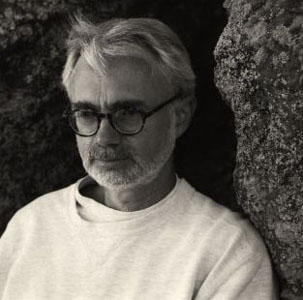
John AdamsAdams steeped himself in non-European music, listening to everything from the string instruments of India and Afghanistan to Pakistani qawwali singers like Nusrat Fateh Ali Khan, and studied the writings of beat poet Jack Kerouac -- whose book "Big Sur," Adams wrote, "oscillates between turbulence and ecstasy."
What finally emerged was a work that sounds like nothing else -- a surging, almost oceanic concerto that's not really Eastern, not really Western, and barely even of this solar system. Most of the instruments are tuned according to their natural harmonic overtones -- what's called "just intonation," rather than the modified "tempered" tuning that Western ears are used to -- giving the work a rich, exotic flavor. It also sounds utterly improvised. As the orchestra gently undulates, spinning out long, shimmering chords, the electric violin soars rhapsodically overhead -- a kind of otherworldly bird gazing down on a landscape of boundless possibilities.
"It's a kind of spiritual journey, a very personal piece," says the BSO's Marin Alsop, who will be conducting the performance. "It's very meditative, and extremely liquid and flowing -- a new dimension of his personality. And I'm very excited about doing it with Leila. She's very hip, and she really makes a piece of music her own."
"This is the stuff that gets me passionate about what I do," Josefowicz says. "I love the standard works, but you have to also have that adventurous side. I'm trying to do things that are unusual, that are totally different, that will give people a new musical experience. I'm trying to make as much of a difference as one person can."
Leila Josefowicz will perform with the Baltimore Symphony Orchestra tonight and tomorrow night at Meyerhoff Symphony Hall in Baltimore. The program also includes works by Mahler and Rimsky-Korsakov.

